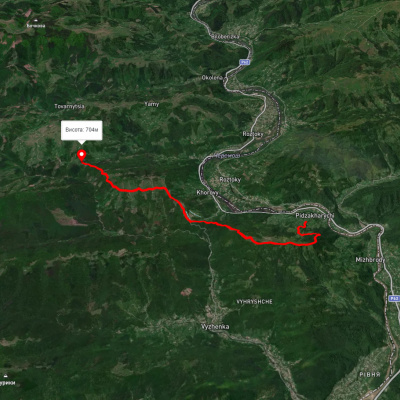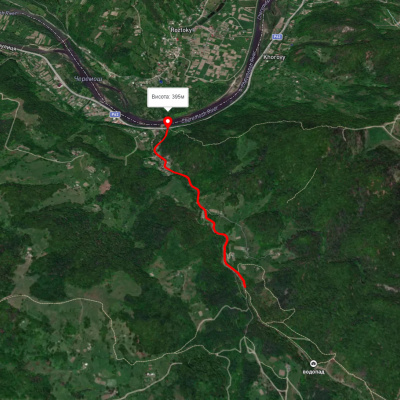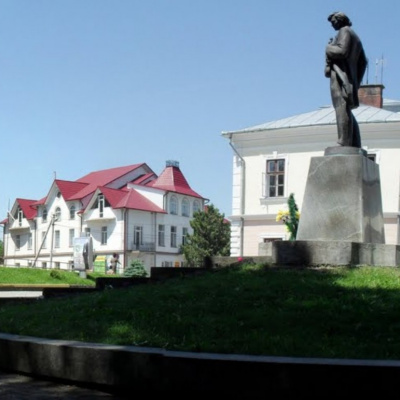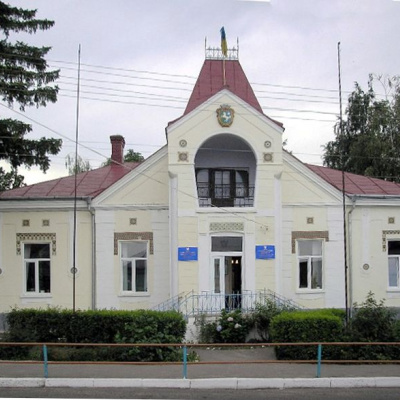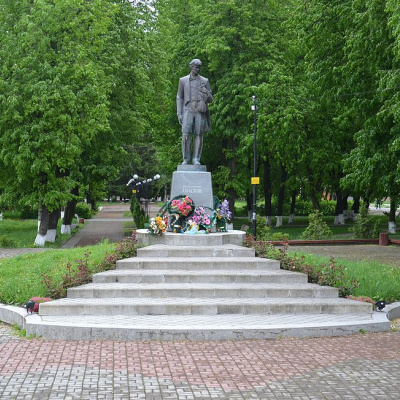Kitsman
Kitsman is an old town in Bukovyna, a rayon subordination, the center of the Kitsman district in the Chernivtsi region. It is located on the Sovytsia River, a tributary of the Prut, with forested areas, 20 km northwest of the regional center. The Chernivtsi-Ternopil highway and the railroad pass through the town. The population is 7.6 thousand people.
Kitsman residents say that those who drank the water here stayed here. Flag. The central element of the coat of arms is a blue and green coat of arms made in accordance with the recommendation of the Ukrainian Heraldic Society (UHS). When creating the new coat of arms, the shape of the Spanish shield was taken, which is traditional for Ukrainian towns and villages. The adopted system of decorations of symbols and elements of the coat of arms is as follows: The blue color of the coat of arms means loyalty, honesty of citizens, their impeccability in work, as well as water resources, which the city is so rich in; The green color of the shield symbolizes the periodic renewal of the land, the green beauty of the city; The shield is decorated with a horse - a symbol of hard work and economic luck, the well-being of the city's residents. In addition, the horse has been a symbol of the city of Kitsman since the times of the Austrian Empire and the Romanian period; In the upper right corner of the shield is a barrel in which, according to legend, a woman named Kitsa (from which the modern name of the city comes) drowned a Turk. This is a sign of respect for the history and historical symbols of the region; The cartouche (frame) of the shield is an ear of wheat and beech branches of golden color, made in accordance with the requirements of the UGT; The upper part of the cartouche is crowned with a flower of the Eastern Carpathian red rhododendron, popularly known as "chervona ruta"; The crown denotes the status of the settlement. The number of teeth on the tower and the color indicate that the settlement is a town of county, and in the current sense of the word, district significance. The lower part shows a charter of the Moldavian prince, where in 1413 the settlement was first mentioned, on the site of which the city of Kitsman is located.
Archaeological finds confirm that there was a settlement on the territory of Kitsman back in the Late Bronze Age of the XI - VII centuries BC.
In the first half of the first millennium A.D., the current territory of the town was settled by the ancient Slavs. Their monuments (Cherniakhivska culture) were found on both banks of the Sovytsia River, the left bank of the Dolishnii Kut tract. In the northeastern part of the site, Old Rus burials were excavated, where the remains of metal and silver earrings and bronze balls were found. On the front side of a metal turban there are square plates with a relief image in the form of leaves. According to archaeological data, Kitsman began its development no later than the twelfth century (the eastern outskirts of the city, the left bank of the Sovytsia River in the Lan tract). There, on the right bank of the Sovytsia River, near the railway station, an early Slavic settlement of the Cherniakhivska culture (II-V centuries AD) was discovered.
Historians believe that the name "Kitsman" comes from the Bukovynian word "kots" for carpet, because carpet makers lived here. There is also an assumption that the settlement got its name from the male name Kozma (Koizma). There is a version of Kitsman from the surname Kotzmen about a man who made baskets from vines (willow).
The legend about the origin of Kitsman says that long before the Tatar invasion of Bukovyna in 1240, there was a large village called Sychet, five or six kilometers to the north, between present-day Kitsman and Zastavna. It was located on the moderate elevation of Mount Nikulikha. Its inhabitants were engaged in agriculture. But once Sychet was attacked by the Tatar-Turks. The Horde took many people into yasyr (Tatar: captivity) and robbed them. Many residents were lucky enough to escape and hide in the beech forests. Later they settled in overgrown ravines. This is how a new settlement gradually emerged. In the new unnamed village lived a widow named Paraskytsia, her children had been taken to an orphanage earlier, and her husband was killed. She lived alone, built a hut, and started a farm. During one of their marches, the Tatars came across a new settlement and looted it. One Tatar came to Paraskytsia. Having gathered some goods, he shouted: "Come on, Kitsa, some pickles! She looked at him with hatred and said, "Take it yourself!" and pointed to a large beech barrel. When the Horde man leaned over the barrel to take the cucumbers, Kitsa grabbed his legs and plunged him into the brine. Zabroda struggled and kicked, but in vain. The thirst for revenge
gave Kitsa strength, and she did not let go of the strangler. He was bubbling in the brine and shouting: "Kitsa is mana, Kitsa is mana!" ("mana" in Tatar means black, cursed). All of Kitsa's fellow villagers and residents of neighboring villages soon learned about this incident. And when it came to a new, unnamed village, they would say: "There is mana where Kitsa is." That's how the picturesque town of Kitsman appeared.
"...Oleksandr, a true Christian and Lord of Moldavia, grants Velykyi Kitsman with the villages of Sukhoverkhiv, Davydivtsi, Khlivyshche, with the property up to the village of Valyava to the so-called forest "Dibrova" to his mother-in-law Anastasia for life. And after her death, the above villages will be transferred to the Bishopric of Radovets St. Nicholas, where his grandparents and great-grandparents are buried. All revenues will belong to the bishopric. This is confirmed by the great and small boyars of Oleksandr: Stanislav, Rotopan, Michalasz, Vlad, Ion, Yugsha, and all our Moldavian boyars confirm this. The Lord of Moldova ordered the lord of Moldavia, Bratei, to affix the seal of the Lord to this Charter on July 6, 1413."
Later, according to her will, it was transferred to the church. Other sources teach that in the same year, 1413, Alexander the Good donated Kitsman to the Diocese of Radivtsi.
Які туристичні (пішохідні) маршрути проходять через/біля Kitsman?
Пропонуємо пройти такі туристичні (пішохідні) маршрути через/біля Kitsman: пер. Німчич - Протяте Каміння, Смугарські водоспади
